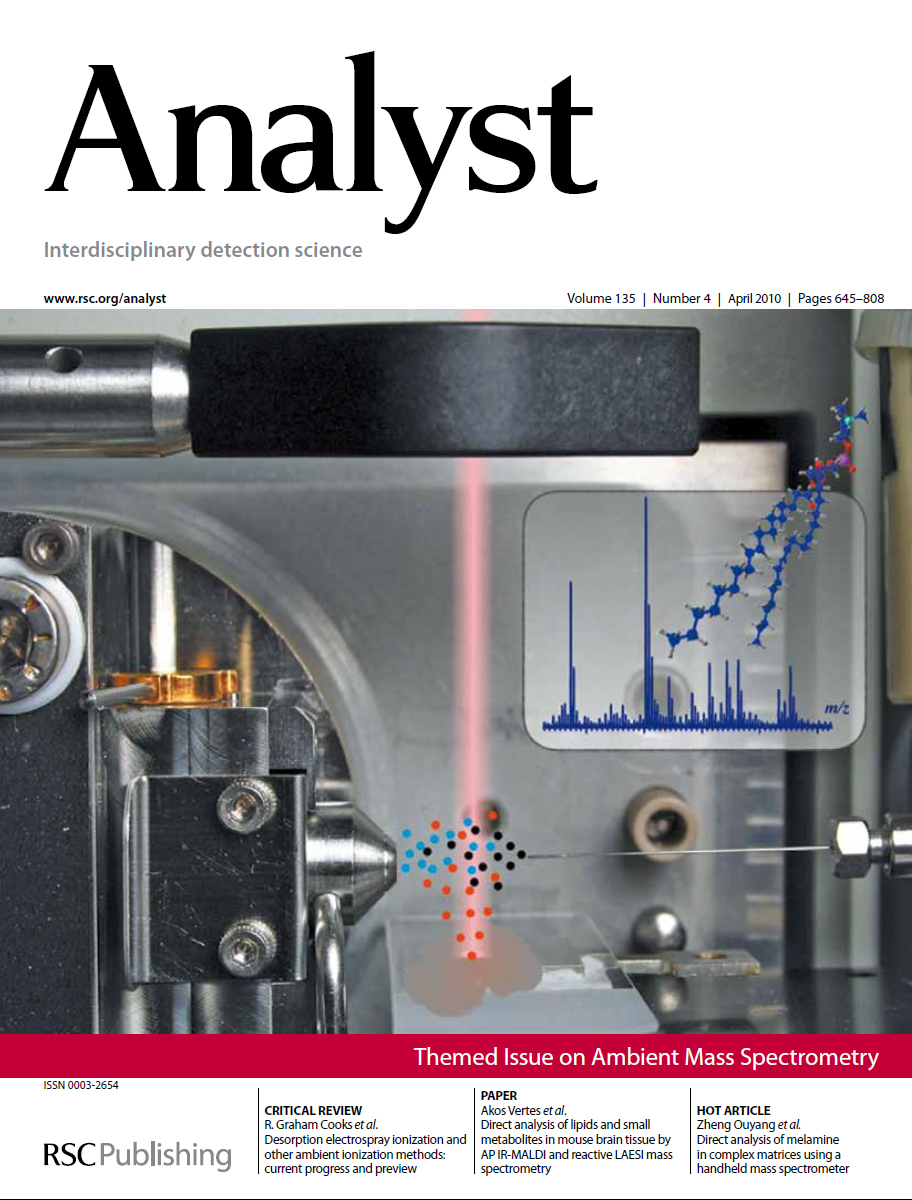B. Shrestha, P. Nemes, J. Nazarian, Y. Hathout, E. P. Hoffman, and A. Vertes
Analyst, 2010, 135, 751-758
DOI: 10.1039/b922854c | Impact factor (2011): 4.23
DOWNNLOAD | ONLINE
ABSTRACT
Ambient analysis of metabolites and lipids from unprocessed animal tissue by mass spectrometry remains a challenge. The utility of the two novel ambient ionization techniques – atmospheric pressure infrared matrix-assisted laser desorption ionization (AP IR-MALDI) and laser ablation electrospray ionization (LAESI) – is demonstrated for the direct mass spectrometric analysis of lipids and other metabolites from mouse brain. Major brain lipids including cholesterol, various phospholipid species (glycerophosphocholines, sphingomyelin and phosphatidylethanolamines) along with numerous metabolites, for example g-aminobutyric acid (GABA), creatine and choline, were identified in a typical mass spectrum. In a new ionization modality of LAESI, termed reactive LAESI, in-plume reactions with a solute of choice (lithium sulfate) enhanced structure-specific fragmentation of lipid ions for improved molecular assignment in collision-activated dissociation experiments. In-plume processes in reactive LAESI provide additional structural information without contaminating the biological sample with the reactant.
